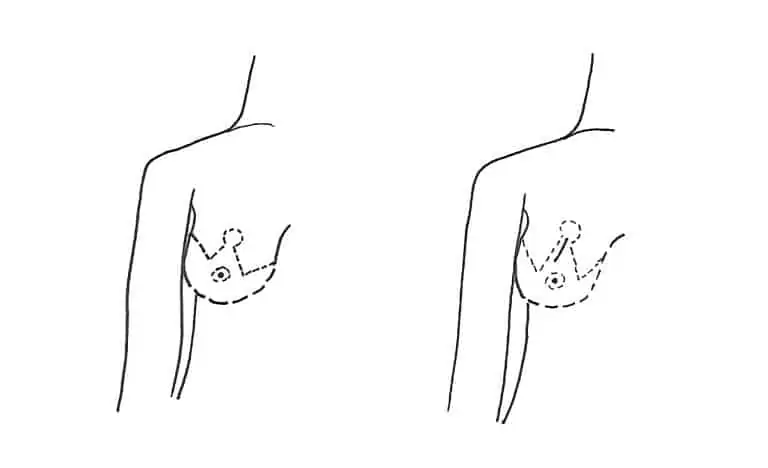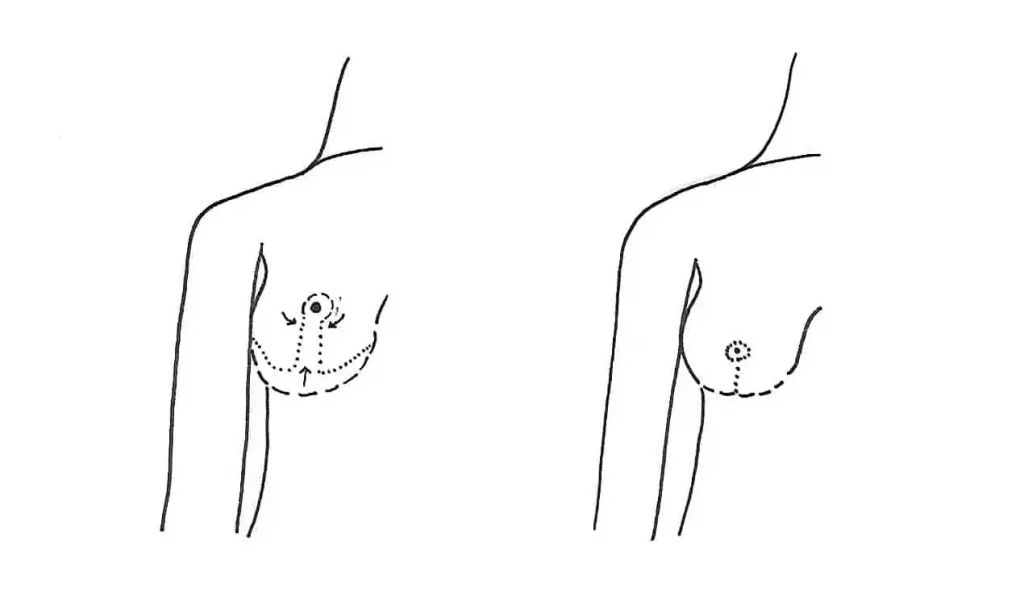BREAST REDUCTION
- Homepage
- AESTHETIC SURGERY
- Breast
- BREAST REDUCTION
Breast Reduction
Very large breasts can cause a woman physical discomfort as well as feelings of embarrassment. Breast Reduction involves the removal of excess breast tissue and skin in order to create a breast size and shape that’s more proportionate to the rest of your body. For some patients, a reduction in nipple size or reshaping of the areola may be incorporated into the reduction surgery as well. Options for Breast Reduction range from minimally invasive approaches with Liposuction to more extensive correction for women who have extremely large breasts.
- The procedure
- Risk & Complications
- Recovery
- FAQs
Breast Reduction surgery is carried out under general anaesthesia, usually taking around 3 hrs in theatre and requires a 1 night stay in hospital.
During surgery both skin and fatty/glandular tissue are removed, the nipple will be repositioned higher so it is located proportionately to the new breast and the whole breast is lifted onto the chest wall. There are two styles of incision often referred to as the ‘Lollipop’ and the ‘Anchor’. The ‘Lollipop involves incisions around the areola and then down into the fold of the breast, this type of incision would usually be used for a smaller Breast Reduction. Typically the ‘Anchor’ incisions are the preferred option, this involves the same incision around the areola and then moving down and along the breast fold along the natural contour of the breast.
As with any surgery, there is always a possibility of complications, including bleeding, infection, or reaction to the anaesthesia. Some patients develop small sores around their nipples after surgery; these can be treated with antibiotic ointments.
The procedure does leave noticeable, permanent scars, although they’ll be covered by your bra or bathing suit. (Poor healing and wider scars are more common in smokers.) The procedure can also leave you with slightly mismatched breasts or unevenly positioned nipples. Future breast-feeding may not be possible, since the surgery removes many of the milk ducts leading to the nipples.
Some patients may experience a permanent loss of feeling in their nipples or breasts. Rarely, the nipple and areola may lose their blood supply and the tissue will die. (The nipple and areola can usually be rebuilt, however, using skin grafts from elsewhere on the body.) Although rare this will happen more commonly in smokers or diabetics.
After surgery, you’ll be wrapped in a surgical bra over gauze dressings. A small tube may be placed in each breast to drain off blood and fluids for the first day or two but in most cases tubes are not necessary.
You may feel some pain for the first couple of days-especially when you move around or cough-and some discomfort for a week or more. Dr. med. Strouthou will prescribe medication to lessen the pain.
The bandages will be removed a day or two after surgery, though you’ll continue wearing the surgical bra around the clock for several weeks, until the swelling and bruising subside.
If your breast skin is very dry following surgery, you can apply a moisturiser several times a day, but be sure to keep the suture area dry.
Your first menstruation following surgery may cause your breasts to swell and hurt. You may also experience random, shooting pains for a few months. You can expect some loss of feeling in your nipples and breast skin, caused by the swelling after surgery. This usually fades over the six weeks or so. In some patients, however, it may last a year or more.
Will my insurance or Gesy cover Breast Reduction?
Most major insurance companies provide insurance and Gesy coverage for Breast Reduction, but there are several factors that must be looked at in order to determine whether you are eligible for coverage.
Will I still be able to breastfeed?
In most cases it is possible to preserve the lactating functions of the breast but this can not be guaranteed. When you choose to undergo Breast Reduction surgery, you must be aware of this risk.
What is the age requirement for Breast Reduction surgery?
While Breast Reduction may be performed at any age, we generally recommend waiting until one’s breasts are fully developed. In the event that a Breast Reduction must be done before a patient’s breasts have fully developed the patient must understand that there is a possibility that of needing a second reduction surgery later in life.


